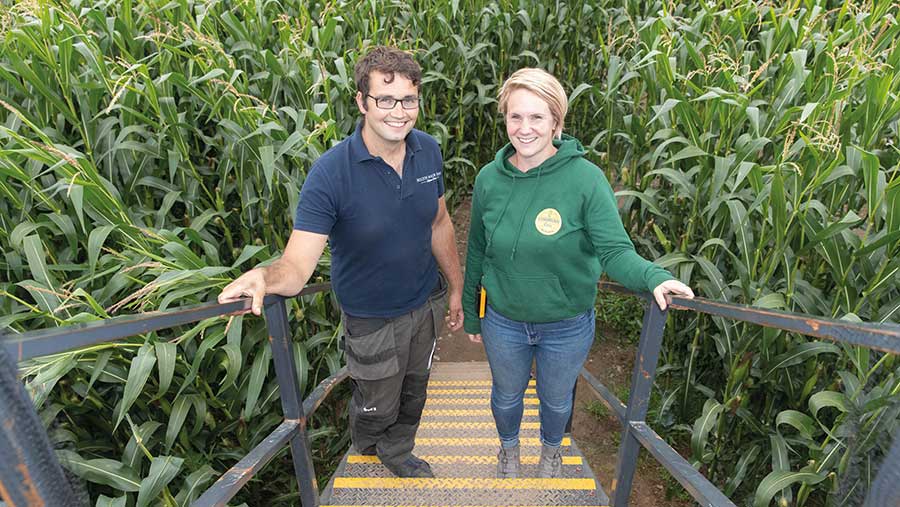Farmer Focus: Maize faring well as grazing tightens
 © Tim Scrivener
© Tim Scrivener By the time you read this, I’m hoping the drought is over and we are all whining about the rain, but as I sit here writing, things are as dry as I ever remember them.
We took second cut on 31 May, which outperformed our expectations as far as quantity goes – time will tell on quality. The aftermaths have had no rain and regrowth is very slow.
It’s a similar story with the grazing. Things are becoming tight and I’m going to have to incorporate around 12ha (30 acres) of silage ground into the grazing rotation.
See also: How maize is driving dry matter intake in NI dairy herd
However, the maize is enjoying the sun. The film keeps the moisture in, and by the time the plants are big enough to break out, the roots are deep enough to maintain them. The crop, on average, is waist high already.
The fields that have come out of grass are immaculately clean, but the fields following wheat and winter sheep feed need an additional herbicide.
This will be the third year we have grown a maize maze. My wife, Anna, designs it before I plot the entire maze on an Excel spreadsheet.
We then mark the whole thing out with a measuring wheel and spray cans, before using garden hoes to cut the paths out of the 2.83ha (7-acre) field.
This process takes about two weeks, made up of every spare minute we have between other jobs and is back-breaking work.
This year, I decided there must be a better way. After a couple of hours in the workshop, I produced an attachment for our small load-all to pull plants out using some old Vaderstad tines.
It worked fantastically, and we managed the job in a much more sensible four days.
Building work has begun. The footings have just been poured for the cubicle shed and the housed cows are performing unbelievably well despite the higher stocking rate.
The inside and outside groups are yielding 43 and 18 litres, respectively, which makes it very difficult to find more cows to turn out.
After five years of heartache and hassle, we have finally regained our TB4 status.
The stress that being under restrictions puts on man and beast is staggering and I sympathise with those of you who live with it constantly.

